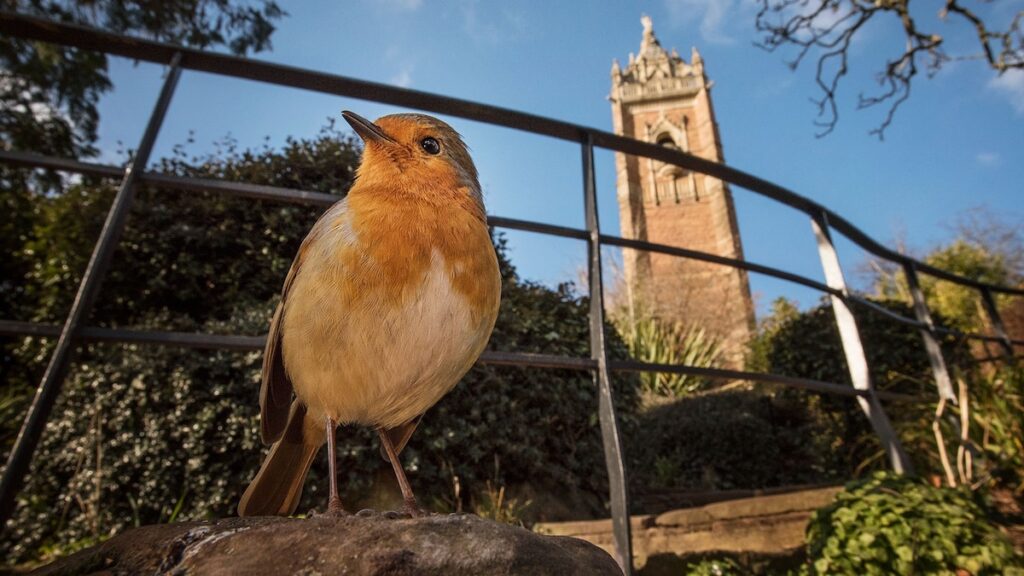Urban Environments and Avian Behavior: A New Perspective on City-Dwelling Birds
The Impact of Urbanization on Bird Behavior
City life presents a multitude of challenges for avian species: bustling traffic, constant noise, and pervasive air pollution. While these factors are often associated with human discomfort, recent research indicates that urban birds may also develop heightened levels of aggression compared to their rural counterparts. This suggests that city-dwelling birds are not only coping with their environment but may also be adapting behaviorally to thrive amid the chaos.
Evidence from the Galápagos Islands
A groundbreaking study published in April in the journal Animal Behavior examined the Galápagos yellow warbler populations living near busy roads. The findings revealed that these warblers exhibit more confrontational responses to intruders than those inhabiting quieter, more remote areas. This pattern is not isolated; similar behaviors have been observed in other species such as great tits, European robins, house sparrows, and dark-eyed juncos, which tend to display increased territorial aggression in urban settings.
Theories Behind Increased Aggression in City Birds
The question arises: why do some bird populations in cities become more aggressive? According to Dr. Jeremy Hyman, a professor of biology at Western Carolina University, multiple hypotheses exist. One possibility is that urban environments select for bolder, more assertive individuals capable of navigating the complexities of city life. Alternatively, the abundance of resources like food in cities might foster territorial disputes, prompting birds to defend their territories more vigorously.
Case Study: Birds Responding to Traffic Noise
Recent research conducted on the Galápagos Islands offers insight into how environmental stimuli influence bird behavior. The islands have experienced a significant increase in human residents-growing by approximately 6% annually-leading to more infrastructure and vehicular traffic. Researchers selected 38 warbler territories on Santa Cruz and Floreana Islands, each bisected by a major road, with some territories located within 300 feet of traffic and others situated farther away.
Using recordings of traffic sounds and bird songs, scientists simulated intrusion scenarios. The results showed that warblers near busy roads responded to both bird calls and vehicle noise with more aggressive behaviors, including closer approaches and even attacks on the playback devices. In contrast, rural warblers exhibited calmer responses, indicating that proximity to human activity influences behavioral adaptations.
Environmental Stressors and Behavioral Changes
Ornithologist Mike Webster, who was not involved in the study, commented that these findings underscore how environmental factors can directly shape animal behavior. Increased noise pollution and habitat disturbance may elevate stress levels, leading to more aggressive tendencies. Such traits could be advantageous, helping birds defend scarce resources or secure vital territories in competitive urban landscapes.
Why Do Urban Birds Become More Aggressive?
The tendency for city birds to display bolder and more combative behaviors can be viewed as an adaptive response. In environments rich in food sources-such as bird feeders, waste, or cultivated landscapes-competition intensifies. Only the most assertive males may successfully establish and defend territories, ensuring access to resources necessary for survival and reproduction.
Conversely, resource abundance might also lead to increased aggression as a means of maintaining dominance. On the other hand, scarcity of food or high stress levels caused by noise and pollution could also provoke territorial disputes, as birds strive to secure enough resources to sustain themselves and their offspring.
The Survival Advantage of Aggression
Is heightened aggression beneficial for survival? In some cases, yes. For example, a study of house sparrows in Virginia found that aggressive males did not invest less in their offspring compared to less aggressive peers. Females in these populations even spent more time at nests, suggesting that aggression can coexist with parental care and may enhance reproductive success in certain urban environments.
The Role of Genetics and Learning
A key question remains: are these aggressive behaviors innate or learned? Some evidence suggests a genetic component, with certain birds predisposed to assertiveness. However, environmental influences-such as ongoing exposure to noise and human activity-can also modify behavior over an individual’s lifetime. Birds are remarkably adaptable, capable of adjusting their responses based on environmental cues.
Future Directions in Urban Ornithology
Scientists continue to investigate how different species tolerate urban pressures and which traits facilitate successful adaptation. Understanding the balance between genetic predisposition and learned behavior is crucial for conservation efforts, especially as urban areas expand globally. As cities grow, so does the importance of studying how wildlife adjusts to these changing habitats.
Concluding Thoughts
While the puzzle of urban bird behavior is far from complete, current research highlights the complex interplay between environment, behavior, and survival strategies. Recognizing that city birds are actively adapting-sometimes becoming more aggressive-can inform urban planning and conservation initiatives, ensuring that both human and avian communities can coexist harmoniously in the evolving landscape.

